Angelfish Care Guide: Nurturing the Royal Icons of Freshwater Aquariums
Graceful, elegant, and strikingly beautiful, angelfish have long been considered the crown jewels of the freshwater aquarium. With their long, flowing fins and serene yet commanding presence, these fish bring a sense of quiet majesty to any tank they inhabit. But their allure isn’t just about looks—angelfish also possess unique social behaviors and fascinating personalities that make them both captivating and rewarding to keep.
Whether you’re a seasoned aquarist or just beginning your fishkeeping journey, angelfish demand more than admiration—they require attentive care, proper tank conditions, and thoughtful companionship. In this guide, we’ll explore everything you need to know to keep your angelfish healthy and thriving, while preserving the regal beauty that makes them so beloved around the world.
- Quick Care Stats
- Species Overview
- Appearance
- Tank Requirements
- Tank Setup
- Diet and Feeding
- Tank Mates
- Breeding
- Diseases & Treatment
- Buying Healthy Angelfish
- Acclimating Angelfish to the Aquarium
- Frequently Asked Questions (FAQs)
Quick Care Stats
- Scientific Name: Pterophyllum scalare
- Common Name: Angelfish, Freshwater Angelfish
- Origin: South America (Amazon River Basin, Peru, Brazil, Colombia)
- Max Length: 6 inches (15 cm) tall, 4 inches (10 cm) wide
- Minimum Tank: 20 gallons (75 liters)
- Stocking: 1–2 per 20 gallons; compatible with peaceful tankmates
- Temperament: Semi-aggressive, territorial during breeding
- Feeding: Omnivorous; flakes, pellets, live, or frozen foods
- Breeding: Egg-layer; moderate difficulty with proper setup
- Habitat: Slow-moving rivers, flooded forests with dense vegetation
- Tank Setup: Tall, planted tank with vertical space, moderate flow
- Active Tank Levels: All levels, prefers mid to top
- Temperature: 76–82°F (24–28°C)
- pH: 6.0–7.5
- Water Hardness: 3–10 dGH
- Lifespan: 8–12 years
Species Overview
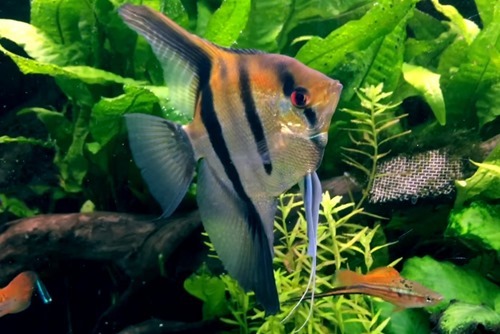
Angelfish, scientifically known as Pterophyllum scalare, are graceful freshwater fish native to the slow-moving rivers, floodplains, and swamps of the Amazon River Basin in South America, spanning Brazil, Peru, and Colombia.
They inhabit warm, soft, slightly acidic waters with temperatures between 26 and 30°C and a pH of 6.0 to 7.5, often found among dense aquatic vegetation, submerged branches, and fallen trees. These environments, including flooded forests and oxbow lakes, provide ample cover and a rich supply of small invertebrates, crustaceans, and plant matter, which form the core of their diet. The complex structure of their habitat, with its tangled roots and lush plant growth, allows Angelfish to navigate and thrive in these biodiverse ecosystems.
The distinctive triangular, disc-shaped body of Angelfish, complemented by long, flowing fins, enables them to glide effortlessly through their surroundings. Their coloration in the wild typically ranges from silvery-green to brownish with dark vertical stripes, providing effective camouflage among the vertical stems of aquatic plants and tree roots. This body shape and coloration allow them to blend seamlessly into their environment, evading predators such as larger fish and birds. Their ability to maneuver agilely in tight spaces, thanks to their laterally compressed bodies, is a key adaptation to the intricate, vegetated waters of the Amazon Basin.
A striking feature of Angelfish is their elegant, almost regal appearance, with fins resembling angel wings, which has earned them their common name. They exhibit a social behavior, often forming loose hierarchies or pair bonds in the wild, and are known for their deliberate, graceful swimming style. Their vertical stripes not only aid in camouflage but also play a role in communication within their groups, signaling dominance or submission.
Despite their adaptability, Angelfish are sensitive to environmental changes, and their habitats face threats from deforestation, river damming, and pollution, which jeopardize the delicate balance of the Amazon’s flooded ecosystems where these iconic fish thrive.
Appearance
Angelfish are renowned for their distinctive, regal appearance, which has been enhanced through selective breeding in captivity. Key features include:
Base Color: Wild Angelfish are silver with bold, black vertical stripes that aid in camouflage among plants. Captive-bred varieties display a stunning array of patterns, including marble (white with black marbling), koi (white with orange and black patches), gold (solid golden hue), black, and veil (elongated fins). These variations add vibrant diversity to aquariums.
Fins: Their long, flowing dorsal and anal fins create a triangular silhouette, giving them a majestic, sail-like appearance. The caudal fin is fan-shaped, contributing to their graceful swimming. Veil-tail varieties have even longer, more delicate fins.
Body Shape: Laterally compressed and disc-like, their bodies are designed for agile navigation through dense vegetation. This shape enhances their ability to dart and turn in planted tanks.
Sexual Dimorphism: Sexing Angelfish is challenging outside of breeding. During spawning, males may develop a slight hump on the forehead (nuchal hump), while females appear rounder when carrying eggs. These traits are subtle and not always reliable.
Size: Angelfish reach up to 6 inches (15 cm) in height and 4 inches (10 cm) in width, requiring tanks with sufficient vertical space to accommodate their tall bodies.
Additional Notes on Appearance
The vibrancy of their colors and patterns depends on diet, water quality, and stress levels. A nutrient-rich diet and pristine water enhance their striking stripes or captive-bred hues, while stress or poor conditions can cause fading. Their reflective scales shimmer under moderate lighting, making them a focal point in well-designed aquascapes.
Tank Requirements
A minimum tank size of 20 gallons is required for 1–2 Angelfish, but a 30–55-gallon tank is preferred for a small group of 4–6 to allow for their social dynamics and territorial needs. Their tall, disc-shaped bodies require vertical space, so choose a tank at least 18 inches (45 cm) high. Stock conservatively at 1 Angelfish per 10–15 gallons when including compatible tankmates to prevent overcrowding and aggression. Stable water parameters are essential:
- Temperature: 76–82°F (24–28°C)
- pH: 6.0–7.5
- Hardness: 3–10 dGH
- Ammonia/Nitrite: 0 ppm
- Nitrate: <20 ppm
A secure, tight-fitting lid is necessary to prevent jumping, especially during feeding or when startled. Weekly water testing with a reliable test kit ensures stability, with 25–30% water changes recommended to maintain water quality. Avoid sudden parameter shifts to prevent stress, which can trigger aggression or health issues.
Tank Setup
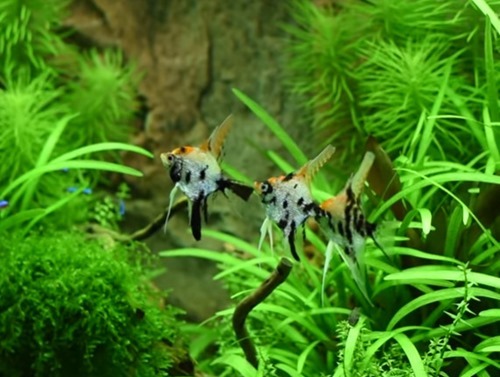
To replicate their Amazonian habitat, create a tank with a naturalistic, planted environment that provides cover and vertical structure. Use tall plants like Amazon swords (Echinodorus spp.), Vallisneria, or Java fern to mimic their preference for dense vegetation, offering hiding spots and swimming corridors. A fine gravel or sand substrate reflects their natural riverbed habitat and enhances their coloration against a darker backdrop. Incorporate driftwood, smooth rocks, or bogwood to add decor and break lines of sight, which helps reduce territorial disputes in group setups.
A moderate-flow filtration system, such as a hang-on-back or canister filter, suits their preference for gentle currents, as strong water movement can stress them. A reliable aquarium heater is essential to maintain stable temperatures, as fluctuations can exacerbate aggression or weaken their immune system. Moderate lighting, such as adjustable LEDs, enhances their colors without causing stress; floating plants like water sprite can diffuse light for a natural effect. Ensure the tank is fully cycled before introducing Angelfish to avoid ammonia or nitrite spikes.
Additional Setup Considerations
- Decor: Add vertical elements like tall driftwood or slate to complement their swimming habits and provide spawning surfaces for breeding pairs.
- Maintenance: Regularly prune plants to maintain open swimming areas, as Angelfish are active swimmers. Remove debris and uneaten food promptly to prevent water quality issues.
Diet and Feeding
Angelfish are omnivorous, with a diet in the wild consisting of small crustaceans, insects, and plant matter. In captivity, they thrive on a varied diet that supports their health and vibrant coloration. Recommended foods include:
- Dry Foods: High-quality flakes or pellets formulated for tropical fish or cichlids serve as a staple. Choose products with a balance of protein and plant-based ingredients to mimic their omnivorous diet.
- Live/Frozen Foods: Supplement with live or frozen foods like brine shrimp, bloodworms, daphnia, or tubifex worms to promote growth, coloration, and overall vitality. These foods stimulate natural hunting behaviors.
- Vegetable Matter: Occasionally offer blanched vegetables like spinach, zucchini, or spirulina-based foods to provide fiber and essential nutrients.
- Feeding Frequency: Feed 1–2 times daily, offering only what they can consume in 2–3 minutes to avoid overfeeding, which can degrade water quality. Split feedings (morning and evening) help maintain consistent nutrition.
Feeding Tips
- Vary the diet weekly to ensure nutritional balance and prevent dietary deficiencies, which can lead to issues like Hole-in-the-Head Disease.
- Observe feeding behavior to ensure all fish eat, as dominant Angelfish may outcompete shyer ones. Scatter food across the tank to reduce competition.
- Remove uneaten food promptly, especially in planted tanks, to prevent fouling and maintain water quality.
A diverse, high-quality diet enhances their vibrant colors, supports growth, and reduces the risk of health issues.
Tank Mates
Behavior and Temperament
Angelfish are semi-aggressive, forming social hierarchies that can lead to territorial behavior, particularly during breeding. They are generally peaceful in community tanks with appropriate tankmates but may nip at slow-moving, small, or long-finned fish, mistaking them for food or asserting dominance. Keeping them in groups of 4–6 helps diffuse aggression, as it prevents a single fish from being targeted. Their intelligence allows them to recognize patterns and interact with their environment, making them engaging but sometimes unpredictable. Monitor interactions closely, especially in smaller tanks or with breeding pairs.
Suitable Tankmates
Choose peaceful, medium-sized species that can coexist with Angelfish without triggering aggression. Ideal tankmates include:
- Fish: Medium-sized, peaceful fish like neon or cardinal tetras, rummynose tetras, corydoras catfish, dwarf gouramis, or Bolivian rams. These species are fast enough to avoid nipping and occupy different tank levels, reducing competition.
- Invertebrates: Small snails (e.g., nerite or mystery snails) may coexist, but shrimp (e.g., cherry or Amano shrimp) are at risk of predation, especially by larger Angelfish. Use caution with invertebrates.
- Avoid: Fin-nippers like tiger barbs or serpae tetras, which may target Angelfish fins. Avoid overly small fish like guppies or endlers, which may be eaten, and slow-moving or long-finned fish like bettas or fancy goldfish, which are prone to nipping.
Tankmate Considerations
- Provide ample hiding spots and visual barriers (e.g., plants, driftwood) to reduce stress and territorial disputes, especially in tanks with multiple Angelfish.
- Monitor new tankmates during introductions, as Angelfish may chase or nip initially. Ensure the tank is large enough (30+ gallons for groups) to accommodate all inhabitants.
- Avoid overcrowding, as high stocking levels increase aggression and degrade water quality, which Angelfish are sensitive to.
Breeding
Preparation for Breeding
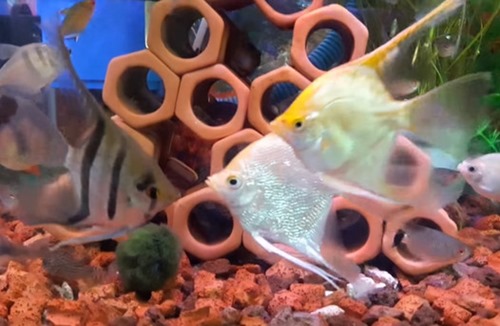
Breeding Angelfish is achievable in captivity with proper setup and care, as they readily form pairs and spawn in well-maintained tanks. Set up a dedicated 20-gallon breeding tank to control conditions and protect eggs and fry. Include flat surfaces like slate tiles, ceramic cones, or broad-leafed plants (e.g., Amazon swords) for egg-laying, as Angelfish prefer vertical or angled surfaces. Maintain optimal water parameters:
- Temperature: 78–82°F (26–28°C)
- pH: 6.5–7.0
- Hardness: 3–8 dGH
- Water Quality: Ammonia and nitrite at 0 ppm, nitrates below 15 ppm.
Condition a potential breeding pair (Angelfish often pair off naturally in groups) with a high-protein diet of live or frozen foods like brine shrimp, bloodworms, or daphnia for 1–2 weeks to enhance health and spawning success. Use a moderate-flow filter (e.g., sponge or hang-on-back) to maintain gentle water movement, and ensure a secure lid to prevent jumping. Dim lighting reduces stress during spawning.
Breeding
Angelfish form monogamous pairs, often identifiable by their close proximity and synchronized swimming. During spawning, the pair selects and cleans a flat surface (e.g., slate, plant leaf, or tank glass), where the female lays rows of adhesive eggs, followed by the male fertilizing them. A single spawn can produce 100–1,000 eggs, depending on the pair’s size and health. Both parents guard the eggs, fanning them with their fins to provide oxygen and remove debris, and may defend the spawning site aggressively. To prevent predation, either remove the parents to the main tank after spawning or carefully transfer the egg-laden surface to a separate hatching tank with identical water parameters. If left with parents, eggs are at risk of being eaten, especially by inexperienced pairs.
Caring for Fry
Eggs hatch in 2–3 days at 78–82°F (26–28°C), with fry becoming free-swimming 5–7 days later. The fry initially feed on their yolk sacs before requiring external food:
- Initial Feeding: For the first 5–7 days after becoming free-swimming, feed newly hatched baby brine shrimp, micro worms, or commercial liquid/powdered fry food designed for egg-layers. Feed small amounts 3–4 times daily to ensure adequate nutrition.
- Nursery Tank: Use a 10–20-gallon bare-bottom tank with gentle aeration and a sponge filter to maintain pristine water. Perform daily 10–15% water changes with temperature-matched, dechlorinated water to prevent ammonia buildup.
- Growth and Development: Fry grow slowly, reaching about 1 inch (2.5 cm) in 6–8 weeks. Gradually introduce finely crushed flakes or micro-pellets as they grow, alongside live foods. Provide fine-leaved plants or spawning mops for cover to reduce stress.
Monitor fry for fungal infections or poor growth, and separate larger fry if cannibalism occurs. With proper care, fry can reach juvenile size in 2–3 months, displaying early coloration and patterns.
Diseases & Treatment
Angelfish are hardy but susceptible to diseases if water quality or diet is suboptimal. Common health issues and treatments include:
- Ich (White Spot Disease): Characterized by white spots on the body or fins, scratching, and lethargy. Treat by gradually raising the tank temperature to 80–82°F (27–28°C) for 3–5 days and adding aquarium salt (1 teaspoon per gallon, pre-dissolved) or a commercial ich medication (e.g., API Super Ick Cure), following instructions. Increase aeration during treatment, as warmer water holds less oxygen. Perform 25% water changes before and after treatment to maintain water quality.
- Fin Rot: Indicated by frayed, discolored, or deteriorating fins, often caused by bacterial infections linked to poor water quality or injury. Improve water conditions with 25–30% water changes and ensure ammonia/nitrite levels are 0 ppm. Treat with a broad-spectrum antibacterial medication (e.g., Seachem Kanaplex, API Furan-2), following dosage instructions. Remove carbon from filters during treatment and complete the full course.
- Hole-in-the-Head Disease: Pits or lesions on the head, linked to poor water quality, inadequate diet, or parasitic infections. Enhance nutrition with a varied diet (live foods, high-quality pellets, vegetables) and perform frequent 25–30% water changes to improve water quality. If parasites are suspected, treat with a medication like Seachem MetroPlex, following instructions. Consult an aquatic veterinarian for severe cases.
- Stress: Symptoms include hiding, faded colors, or reduced appetite, often triggered by poor water quality, overcrowding, or aggressive tankmates. Test and correct water parameters, reduce tank disturbances (e.g., dim lights, minimize noise), and ensure sufficient hiding spots. Check for incompatible tankmates and adjust stocking if necessary.
Prevention
Prevent most health issues with proactive care:
- Perform weekly 25–30% water changes using dechlorinated, temperature-matched water to maintain pristine conditions.
- Test water parameters regularly to ensure stability, particularly ammonia, nitrite, and nitrate levels.
- Provide a varied, high-quality diet to prevent nutritional deficiencies and support immune health.
- Quarantine new fish or plants for 2–4 weeks to avoid introducing pathogens.
- Avoid overcrowding and monitor group dynamics to minimize aggression and stress.
Regular observation and early intervention are key to keeping Angelfish healthy and vibrant.
Buying Healthy Angelfish
When purchasing Angelfish, inspect them carefully (in-person or via detailed photos/videos from the supplier) for signs of good health:
Appearance: Healthy Angelfish have vibrant colors (e.g., clear stripes, bright marble, or koi patterns), smooth fins, and no visible lesions or discoloration. Avoid fish with faded colors, torn fins, or clamped fins, as these indicate stress or illness.
Behavior: Look for active, alert fish that swim gracefully and respond to their surroundings. Healthy Angelfish may approach the glass or interact with tankmates. Avoid those that are lethargic, hiding, or floating listlessly, as these may be signs of disease or stress.
Body Condition: Ensure the fish have a plump, rounded body with no pinched abdomen or visible spine, which indicate starvation or internal parasites. Fins should be intact, with no fraying or redness.
Eating Habits: Ask the seller to confirm that the Angelfish are actively feeding on flakes, pellets, or live/frozen foods. Request to observe feeding if possible, as refusal to eat may signal health issues.
Acclimating Angelfish to the Aquarium
Proper acclimation reduces stress and ensures a smooth transition to your tank. Angelfish are relatively hardy but benefit from a gradual process to adjust to your tank’s water parameters. The following method is effective and widely recommended:
- Pre-Acclimation Check: Confirm your tank’s water parameters are within the ideal range: temperature 76–82°F (24–28°C), pH 6.0–7.5, hardness 3–10 dGH, ammonia/nitrite 0 ppm, nitrates <20 ppm. Ensure the tank is cycled and has ample hiding spots and plants.
- Temperature Equalization: Float the sealed bag in the aquarium for 10–15 minutes to equalize the temperature between the bag and tank water. Keep the tank lights dim to reduce stress.
- Initial Water Introduction: Partially open the bag and add 1/2 cup (120 mL) of tank water. Secure the bag to the tank’s edge to prevent spilling.
- Wait Period: Allow 10 minutes for the Angelfish to adjust to the mixed water.
- Gradual Water Exchange: Remove 1/2 cup of water from the bag (discard it, do not add to the tank) and add another 1/2 cup of tank water. Wait another 10 minutes.
- Repeat Exchange: Repeat the water removal and addition process one more time, waiting 10 minutes between steps. This gradual process adjusts the fish to your tank’s chemistry.
- Transfer to Tank: Use a net to gently scoop the Angelfish from the bag, or carefully pour them into a container and transfer them to the tank. Avoid adding bag water to the aquarium to prevent contamination. Place them near plants or decor for security.
- Post-Acclimation: Dim the tank lights and minimize disturbances for 24–48 hours. Offer a small amount of food (e.g., flakes or brine shrimp) after a few hours to encourage feeding, and monitor for signs of stress (e.g., hiding, clamped fins).
Acclimation Tips
- Quarantine: Ideally, acclimate Angelfish in a separate quarantine tank for 2–4 weeks to monitor for diseases or parasites before adding them to the main tank. This is especially important for wild-caught fish.
- Observe Behavior: Watch for normal swimming, active feeding, and social interaction within the first day. If fish appear stressed or refuse food, double-check water parameters and ensure compatible tankmates.
- Avoid Rushing: The acclimation process should take 30–45 minutes to minimize osmotic shock and stress. Rushing can lead to health issues or aggression.
By sourcing healthy, preferably captive-bred Angelfish from reputable suppliers and following careful acclimation procedures, you can ensure these majestic fish thrive in your aquarium, showcasing their elegance and engaging behaviors for years to come.
Frequently Asked Questions (FAQs)
Q: Can Angelfish live with small fish like guppies?
A: Small fish like guppies or endlers may be eaten or harassed, as Angelfish may view them as food. Choose medium-sized, peaceful tankmates like neon tetras or corydoras instead.
Q: Do Angelfish need a tall tank?
A: Yes, a tank at least 18 inches (45 cm) high is essential to accommodate their tall, disc-shaped bodies and vertical swimming habits.
Q: Are Angelfish hard to keep?
A: They are moderately easy for beginners, provided water quality is diligently maintained, a varied diet is offered, and tankmates are chosen carefully to avoid aggression.
Q: How can I tell if my Angelfish are breeding?
A: Look for paired fish cleaning a flat surface (e.g., slate, plant leaf) or showing territorial behavior, such as chasing other fish away from a chosen spawning site.
Q: How long do Angelfish live?
A: With proper care, Angelfish can live 8–12 years, though optimal water quality, diet, and low stress can extend their lifespan.
Q: Can Angelfish be kept alone?
A: While possible, they thrive best in groups of 4–6, as social interaction reduces stress and encourages natural behaviors. Solitary Angelfish may become shy or aggressive.
Q: Do Angelfish eat plants?
A: They may nibble on soft plants but are primarily omnivorous. Provide hardy plants like Java fern or Amazon swords, and supplement their diet with vegetable matter to reduce plant grazing.

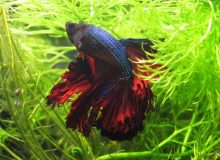
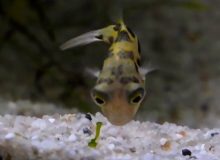


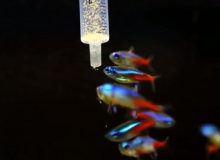
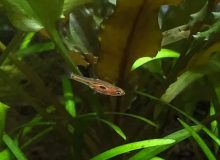
Leave a Reply